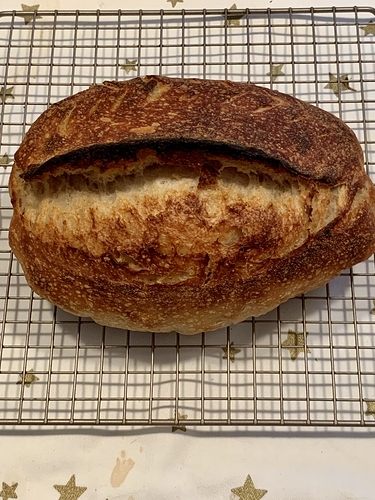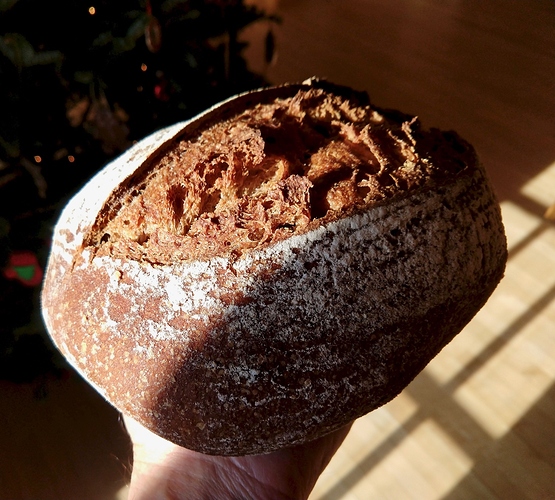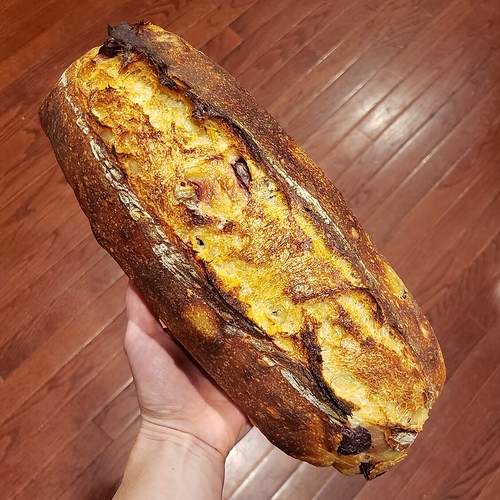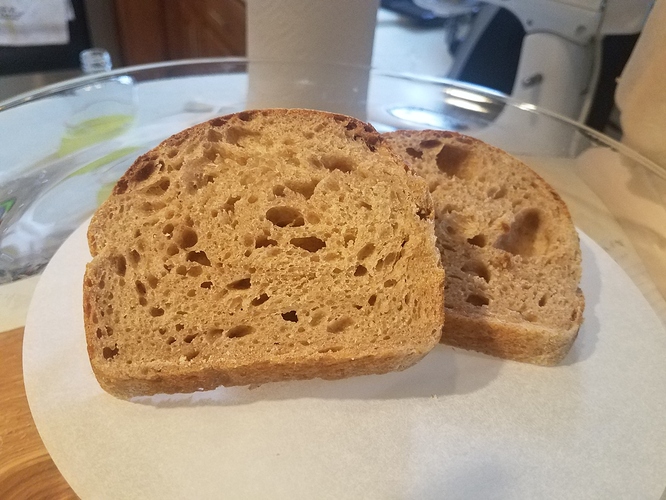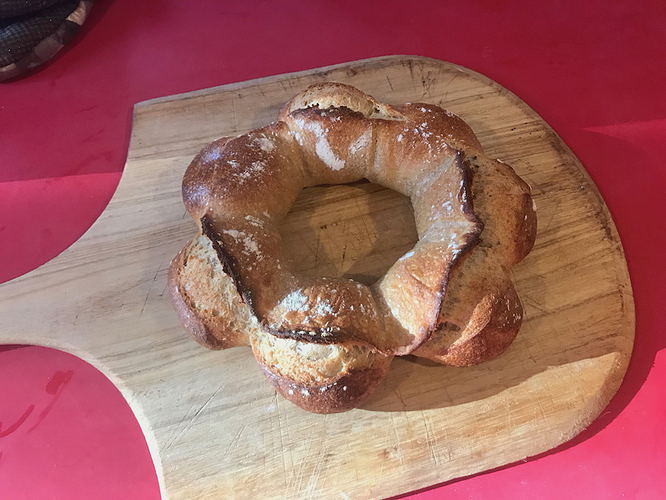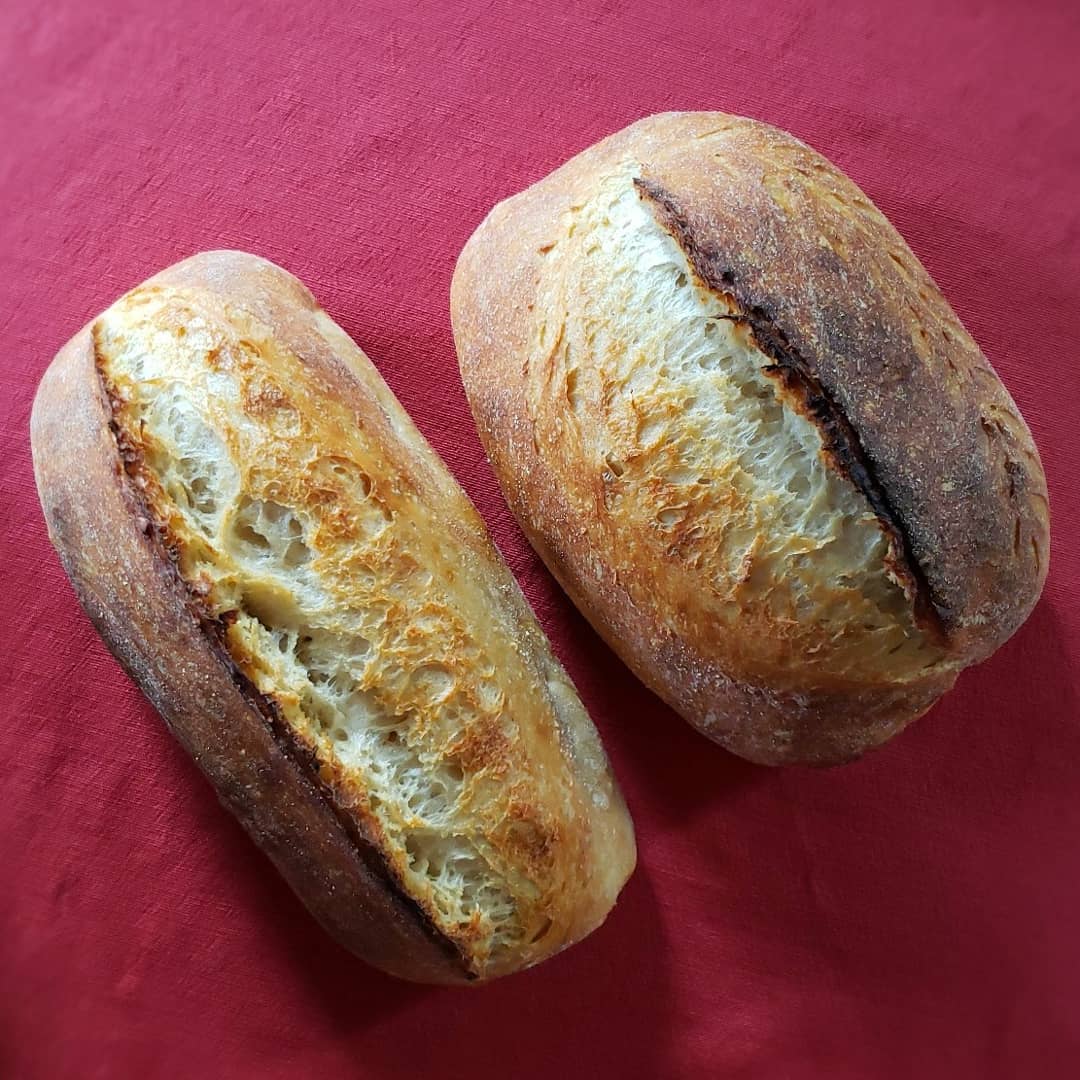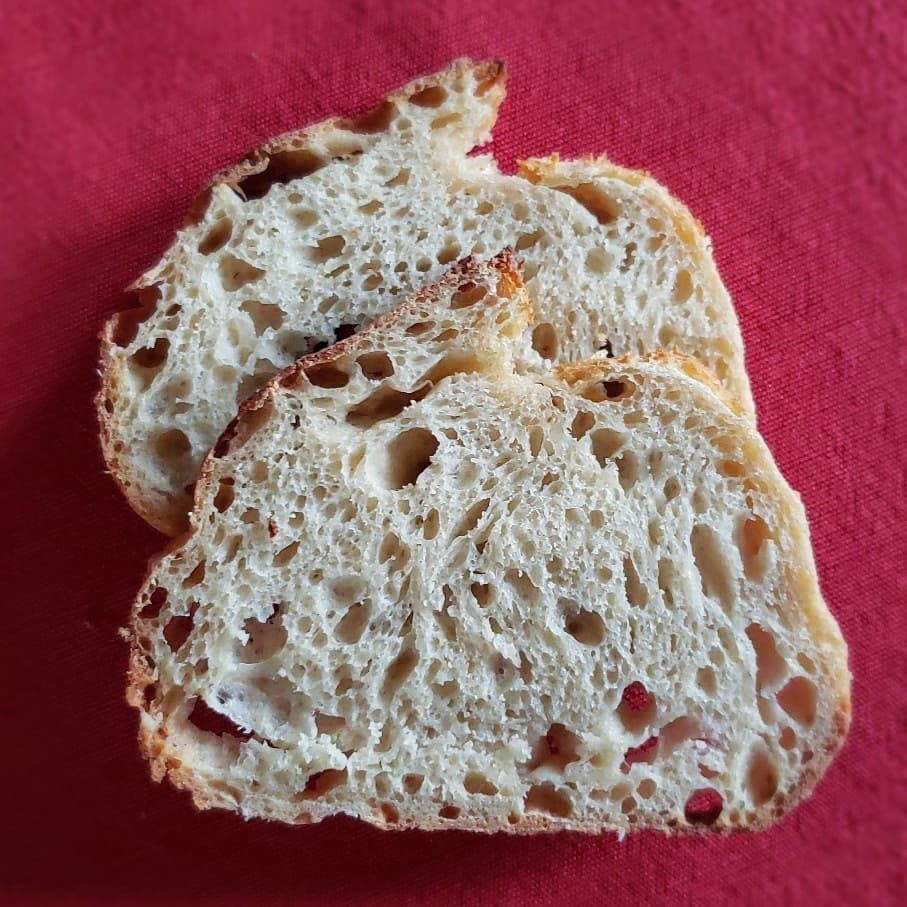Mine was as simple as can be. No bells and no whistles.
I made a couple sourdough baguettes for a post-Christmas, pre-new-years dinner party. Unfortunately no pictures of those. Here’s the last ‘proper’ loaf of 2019 bread from my oven:
1/3 Hard White wheat, 2/3 Red Fife wheat, 100% whole grain, home milled, sourdough leavened.
Happy New Year bread bakers.
Sweet last bakes! Happy New Year to all.
Last bake of 2019 was an olive rosemary kamut sourdough bread that I brought to a party last night.
First “bake” of 2020 is going to be these ravioli. I saw this thread when I got out my phone to remind myself of the numbers : )
My final bread of 2019 was a sourdough oat bread with Kamut as the whole wheat portion of the recipe. Sorry, no pictures! Now I need to feed both of my sourdough starters, Cyril and Sir Riehold son of Cyril, and contemplate which of my favorite loaves to bake first this year. Off the top, I’m thinking of my ultra favorite cranberry pecan sourdough. Happy New Year everyone and happy baking!
Leah
Hi, My last bake was to test the theory of using unfed starter to bake bread after reading the Breadtopia article that was featured in Brot magazine. I used unfed starter to make the levain for this 50 bread/25 ww/25 w spelt pan bread. It worked great and was delicious!!! Just increased the time for the bulk ferment. Thank you Melissa for your experiment and article.
You’re welcome. That’s an awesome looking pan loaf. I bet @homebreadbaker 's last loaf of 2019 was also made with unfed starter 
Last bread of 2019 was a gluten free Quinoa Sourdough.
First bread of 2020 was this Buckwheat loaf. Had a sleepless night last night so decided to bake a loaf of bread after tossing and turning for ages and eventually giving up on falling asleep. Too late for putting together a sourdough so at 3am I found myself making a yeasted Buckwheat loaf. Lovely recipe for an off the cuff bake. Nothing fancy, just ingredients one usully has in stock, like eggs and oil and ready within a couple of hours. Great toasted.
Indeed that’s true. It’s not an experiment for me anymore and virtually every loaf I bake is baked with a small amount of unfed starter straight from the fridge. In my experience there is absolutely zero difference in leavening power between fed and unfed starter. The only difference is that unfed starter takes longer to start the rise as it takes a while for the microbes to “get up to speed” and spread throughout the dough. Once that initial lag period is over though, I think there is no difference at all between fed and unfed starter.
I’ve never understood the concern about using an unfed starter. It has no trouble when being fed so why should it have any issue in leavening a dough? There are, however, some pros I’d like to add for using fed starter…
1: if you haven’t used your starter in a long time it makes sense to ensure its health before making the final dough only to realise your starter isn’t firing on all cylinders.
2: starter is generally more fermented than the final dough and even more so if its been a while since its last feed. The gluten structure will be compromised. So when using unfed starter in your dough its better to use less rather than a significant percentage.
3: flavour and balancing acidity. The alcohol produced by a starter that hasn’t been fed in a while is a waste product. When a starter reaches this stage the flavour and acidity will be off. Believe it or not many believe that tang is not wanted in a bread.
Yes, all true.
-
Has become not a concern for me as I have left my starter unfed in the fridge repeatedly for a couple months at a time with no ill effect on its ability to leaven.
-
and 3. are why I use a really tiny amount of starter. Like under a gram. At this point I just dip the tip of a teaspoon into the starter and then stir that into the water I’m adding to the recipe. Literally just an inoculation. So rather than becoming a component of the flavor of the loaf, all that the starter is bringing to the bread is a small amount of an active culture of microbes… …which takes some time to reproduce and spread through the dough ( = a nice autolyse period). So the flavor I am getting is really a function of the flour I am using in my recipe and the interaction between the starter microbes and that particular flour, and I can modulate the flavor profile (mainly the amount of sour) by varying the length of the bulk proof (taking into account the ambient temperature).
You are totally correct @anon44372566, if I were using starter in the amounts that is called for in most sourdough recipes that my way over-ripe starter would likely bring flavors into the bread that would be unpleasant.
Interesting discussion gentlemen, thank you!!! As a first year SD baker, this question has gnawed at me. Thank you for helping me understand this detail in my SD journey.
The color of that loaf is striking. Nice! Is that 50/50 Kamut/bread flour (or Kamut/AP)?
Wow that is beautiful! What a centerpiece.
The olive loaf was 75% bread flour and 25% whole grain kamut. Some of the color is from photographing in my kitchen after the sun has set. Here’s the same formula, minus the olives and rosemary and with a similar tablecloth to yours lol. (75% hydration)
Nice, beautiful crumb.
I read your entire article and found it solidified a number of issues that I gave been wrestling with. Thank you so much!!! I love your style of writing and so appreciate how you are able to explain everything in a humorous and clear way. Look forward to following you in the future!
Here is a loaf I baked today.
My last bread in 2019 was a German style „Landbrot“. It is baked with sourdough starter, using spelt flour, rye, bread flour and whole wheat flour. I know, quite the combo, but it came rather close to the German style flour used in this recipe. The dough is quite stable and retains its shape nicely when baked. It is rather dense yet light. Goes well with either cold cuts and cheese or peanut butter and jam. It became an instant favourite and is up for a re-bake this weekend.
Love the color!
Preformatted text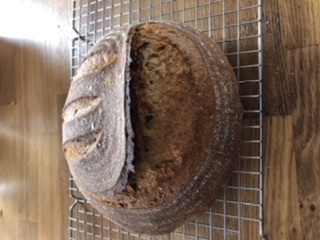
Red fife sourdough- 1/2 red fife, 1/2 Breadtopia’s best bread flour-bolted hard red I believe.
